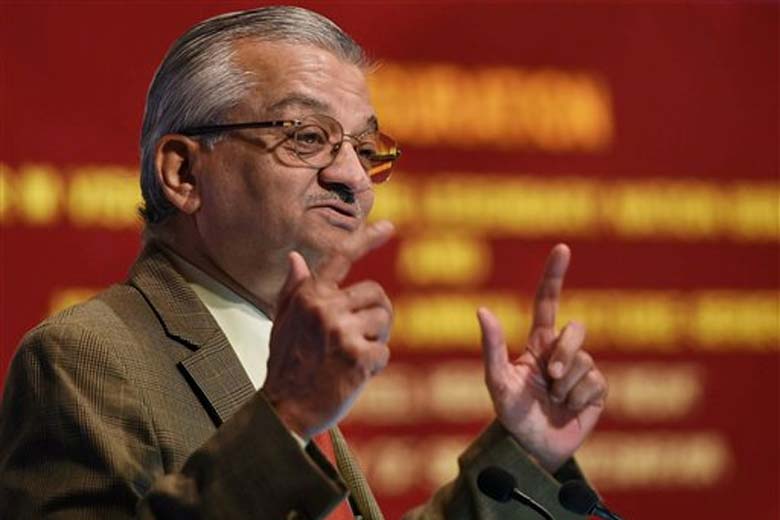 Anil Kakodkar, the former director of the Bhabha Atomic Research Centre and the man primarily responsible for the development (and success) of this country’s nuclear program, is a doyen of Indian science. Born into a family of Gandhian freedom fighters, the spirit of nation-building was imparted to him very early. Soon after obtaining his Mechanical Engineering degree from Mumbai University, he joined the BARC in 1964. Five years later, he would also go onto obtain his Master’s degree from the University of Nottingham in the field of stress analysis.
Anil Kakodkar, the former director of the Bhabha Atomic Research Centre and the man primarily responsible for the development (and success) of this country’s nuclear program, is a doyen of Indian science. Born into a family of Gandhian freedom fighters, the spirit of nation-building was imparted to him very early. Soon after obtaining his Mechanical Engineering degree from Mumbai University, he joined the BARC in 1964. Five years later, he would also go onto obtain his Master’s degree from the University of Nottingham in the field of stress analysis.
His tenure at BARC saw him play an integral role in enhancing the technological skill levels of this country. Joining the BARC’s reactor division, he was heavily involved in the construction of the now famous Dhruva reactor, India’s largest nuclear research reactor and the primary source of weapons-grade plutonium, which first went critical on August 8, 1985, following 10 years of construction.
 “For example, the Dhruva reactor is unique even conceptually. It is completely Indian. Even today, Dhruva is the only reactor of its kind. We began it as a concept and engineered it all the way through,” Anil Kakodkar told Frontline.
“For example, the Dhruva reactor is unique even conceptually. It is completely Indian. Even today, Dhruva is the only reactor of its kind. We began it as a concept and engineered it all the way through,” Anil Kakodkar told Frontline.
More significantly, however, he was one of the core architects behind the successful Peaceful Nuclear Explosion Experiment of May 1974, as well as its repeat in May 1998, both on the barren lands of Pokhran in Rajasthan, for which India received a lot of international flak.
As an important advocate for nuclear self-reliance, Kakodkar was determined not to let international sanctions come in the way of developing India’s nuclear capabilities.
An important example is the role Anil Kakodkar played to develop “various systems for pressurised heavy water reactor” and lead “efforts to use thorium, a radioactive element abundantly available in India, as fuel for atomic production,” according to this Department of Biotechnology, Government of India, profile.
“He has created a roadmap for shaping the third stage of India’s nuclear power programme aimed at tapping vast energy potential of our thorium resources not only as a source for electricity production but also as a primary source for other forms of energy use,” says another profile.
He also led efforts to rehabilitate both power reactors at the Madras Atomic Power Station at Kalpakkam, Tamil Nadu, and the one at Rawatbhata when they were on the verge of losing all relevance. Under his chairmanship of India’s Atomic Energy Commission, the country launched its first nuclear-powered ballistic missile submarine with the vessel named the Arihant in 2009.
More critically, however, he played a significant role in bargaining both with the United States and Nuclear Suppliers Group (NSG) with the objective of relaxing their guidelines and allowing India to enter the global nuclear mainstream despite not being a signatory to the Nuclear Non-Proliferation Treaty (NPT). Among other positions, he was also appointed as the Director of BARC in 1996, and held it until 2000 and served as chairman of India’s Atomic energy commission from 2000 to 2010.
For his immense contributions to the nation, he was awarded the Padma Shri, Padma Bhushan and Padma Vibhushan. Working alongside many governments of different political parties, Kakodkar played a critical role in ensuring India was never left behind in the global nuclear energy game.
Source:TBI
Image Courtesy: FE/BARC
You may also like
-
India Can’t Afford to Remain Stagnant at this Juncture, Says PM Modi; Asks People to Buy Locally-Made Goods
-
Stolen Artefacts to be Returned to India from Scotland Museums
-
Legendary Singer Lata Mangeshkar Passes Away At the Age of 92
-
Netaji’s Hologram Statue at India Gate
-
10th Century Stone Idol of Goat Head Yogini IllegallyRemoved from A Temple in Lokhari, Banda, UP Being Returned to India
